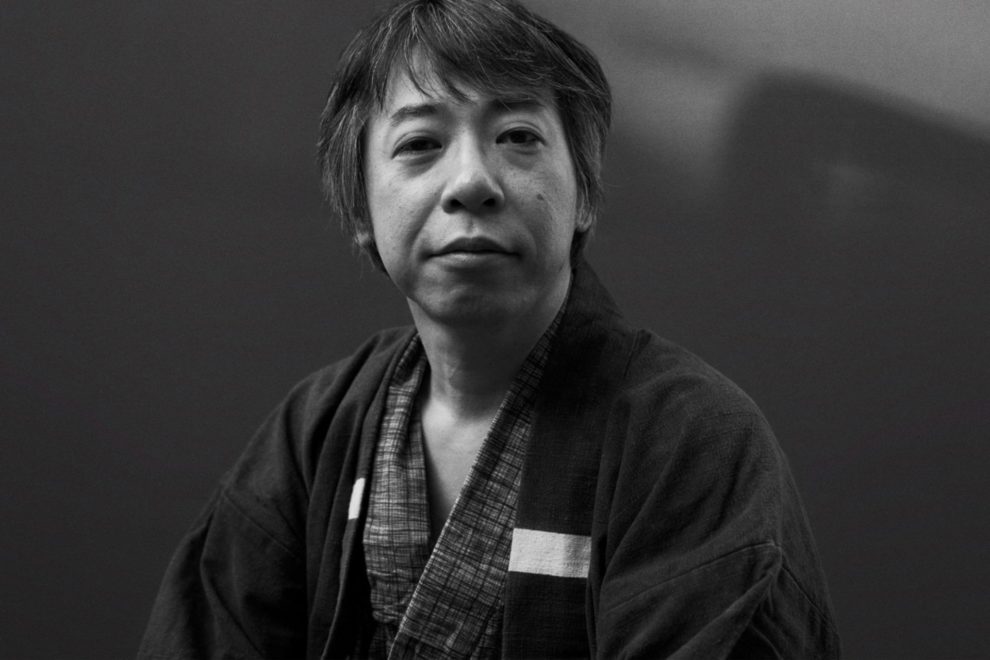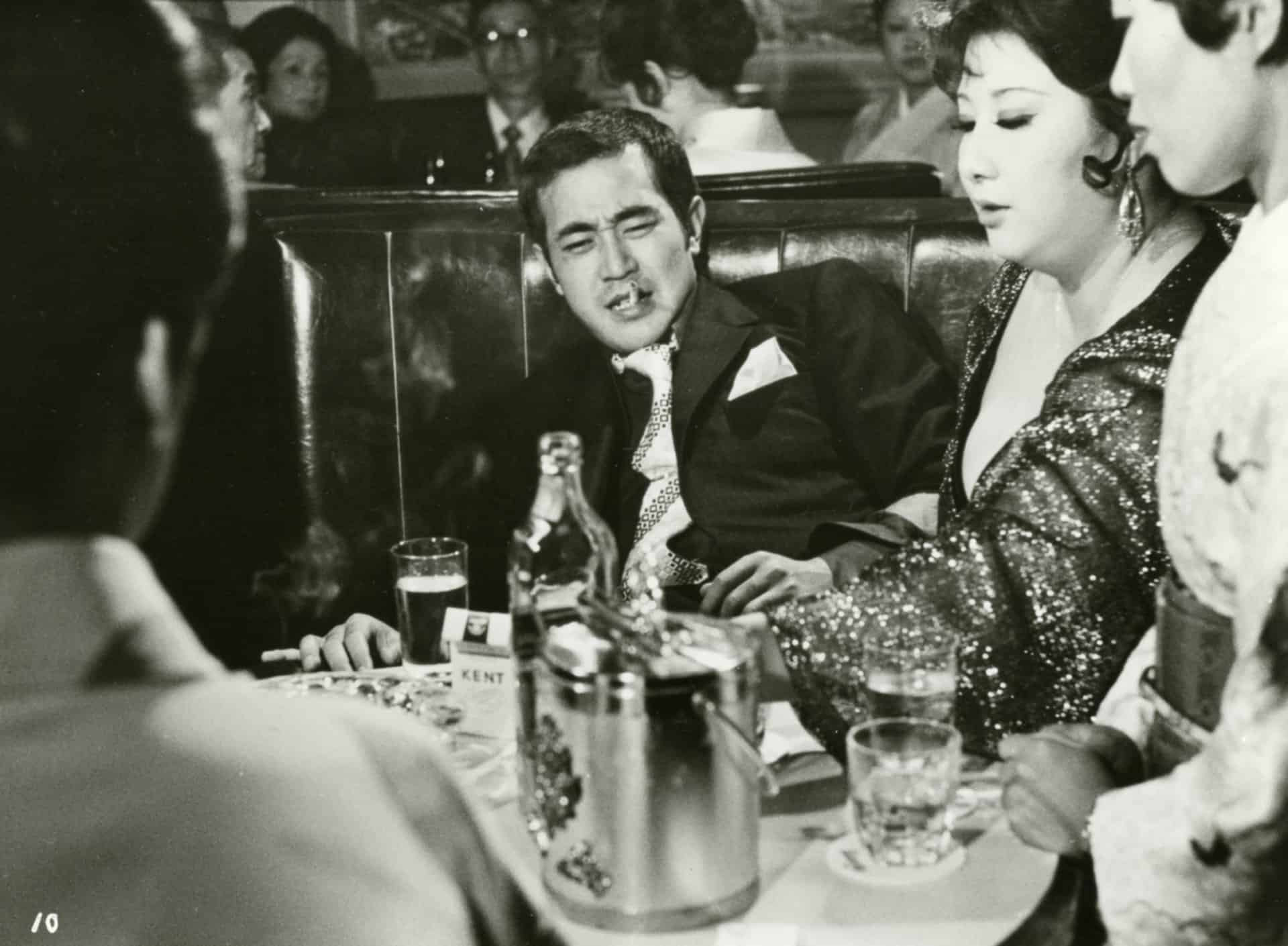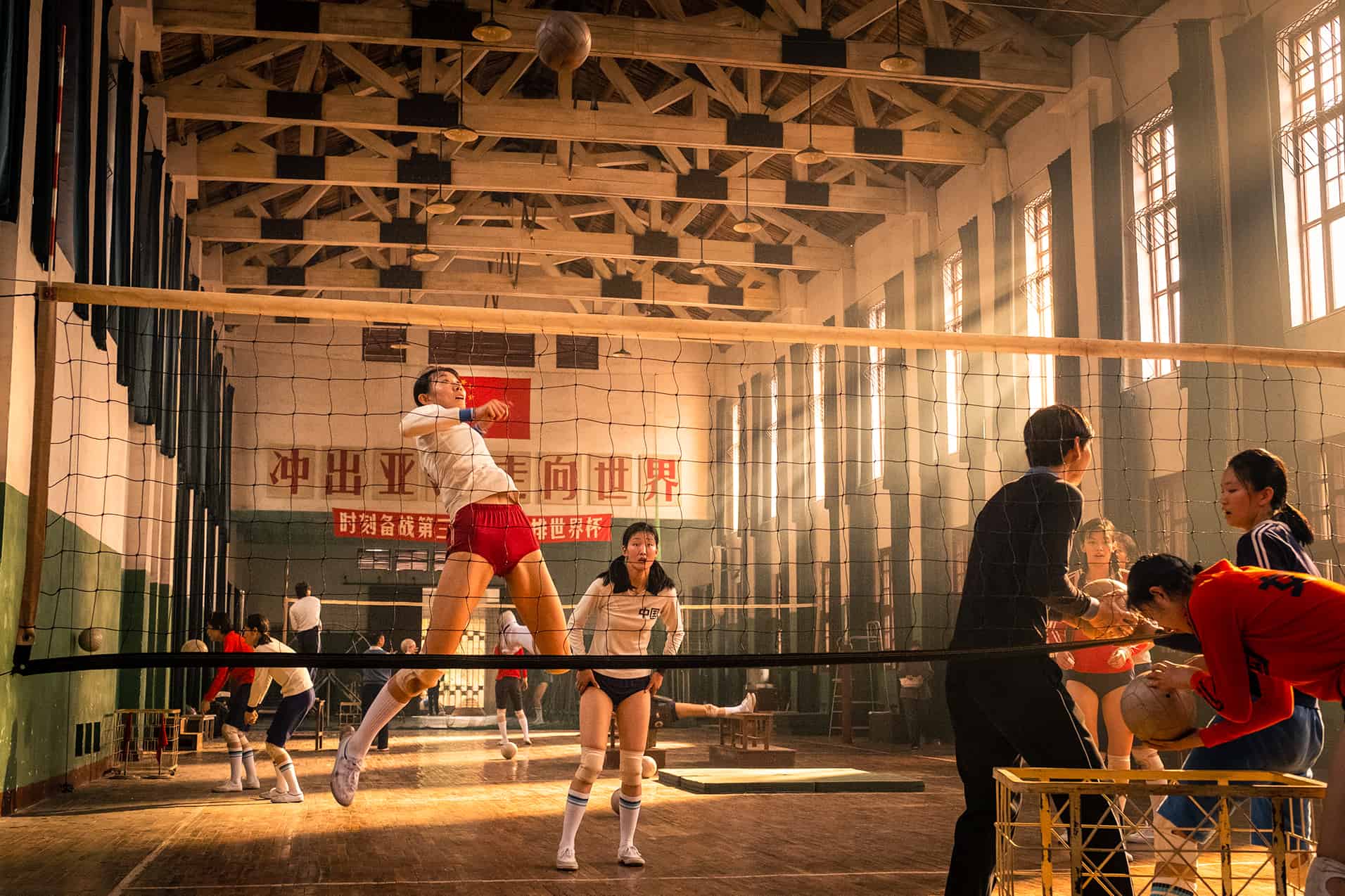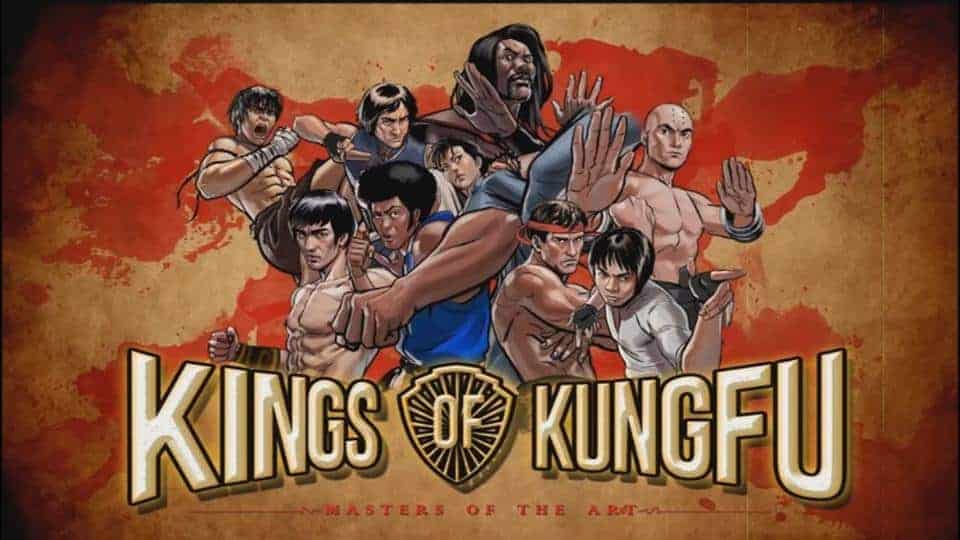translation by Lukasz Mankowski
Toshiaki Toyoda seems to be experiencing one of his most prolific periods, with his recent arrest, the concept of the Olympic Games in Tokyo and the pandemic functioning as a great source of inspiration for him. Namely, since 2018, Toyoda has shot “The Miracle of Crybaby Shotan“, “Planetist”, “Wolf's Calling” and now “The Day of Destruction“.
On the occasion the latter screening at Camera Japan, we speak with him about the parade he managed to organize in Tokyo amidst the pandemic, the rage exhibited in the film, working with GEZAN and Seppuku Pistols on the music, the great cast he managed to amass, guerrilla filmmaking, and other topics.
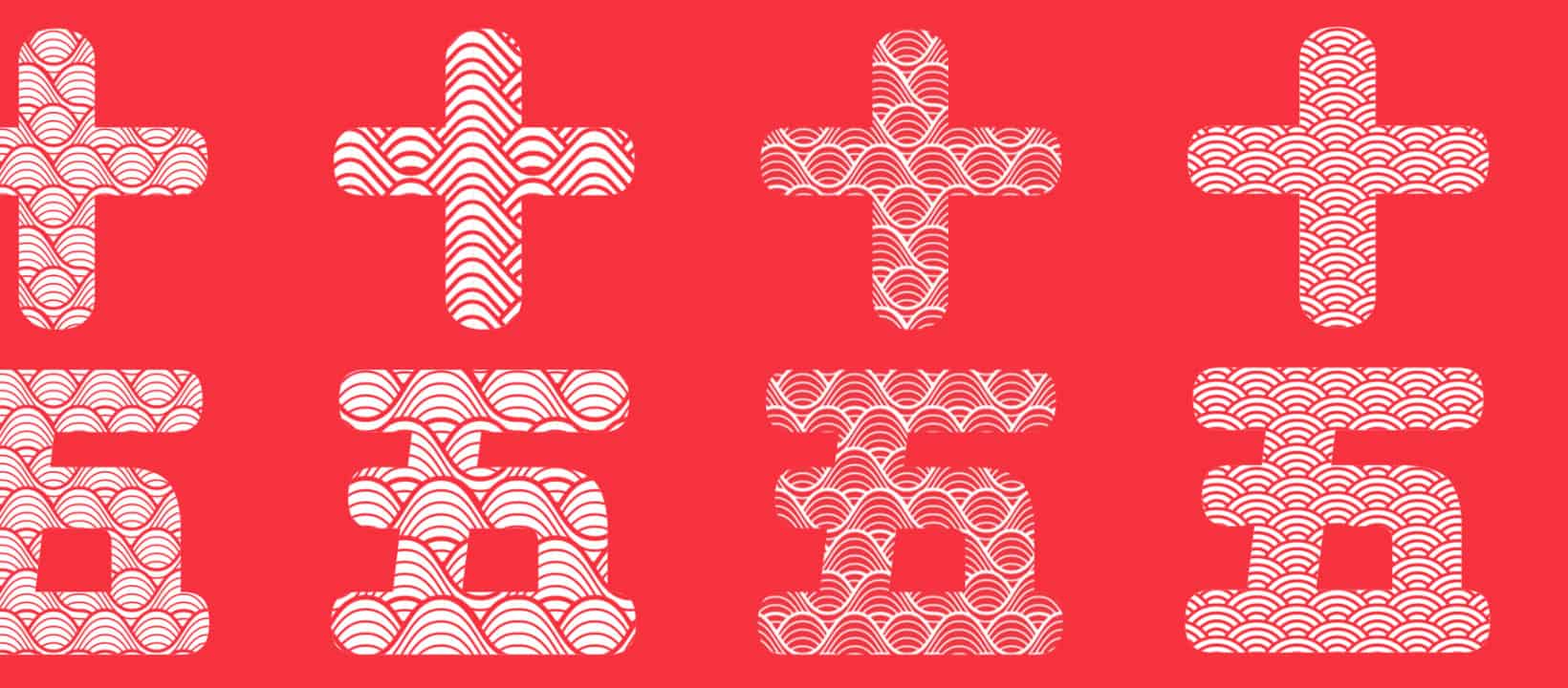
On July 23, you had some of the actors parade through the streets of Tokyo, eventually reaching a stage where Gezan performed. What was your purpose? Were the crew and particularly Kiyohiko Shibukawa ok with this and what was the reaction of the people in the streets?
“The Day of Destruction” is a film that I intended to make exactly on the occasion of the opening of the Tokyo Olympics that supposed to start this year on July, 24th. This day also became a national holiday, becoming a Sports Day (note from the translator: it was previously known as Health and Sports Day and it commemorated the Tokyo Olympics from 1964) in Japan. I thought that for me, it was not the day of sports, but rather, a day of destruction, as we've decided to take it as a title. Public holidays are all about matsuri (festivities). The day before the matsuri, there is a festival eve in the preceding night. On the 23rd of July, we made a live performance called “The Day of Destruction”, that served as a festival eve. Firstly, Kiyohiko Shibukawa and Seppuku Pistols walked from the actual Wolf Shrine of Shibuya and proceeded to the performance in the live house as a prologue. Then, motivated by the appellation to the eradication of the spread of the virus, we legally requested the demonstration, so we were able to walk for 45 minutes until we reached the live house, where the performance took place, accompanied by police patrol cars. And while walking, we were already doing our musical performance. I was handling the camera all the way. Thanks to the authority of the police, all the traffic light turned green, so it was a really enjoyable walk. That day was actually the peak in terms of the number of infected by coronavirus. We had our demo broadcast in the live house and with that we had the performance of GEZAN doing their session at the venue. Of course, even though I was shooting all that, I still managed to get on stage. The live stream was also a new medium for me. That was a way to bring in the audience into the story. All the performers enjoyed it while drinking. It was really fun. According to the Tokyo restrictions amended due to corona outbreak, for the 700 people engaged in the performance, there could be barely 100 people from the audience. However, the audience was really excited about the extravagant approach we forced there. It was a huge success.

“The Day of Destruction” seems to harbor a sense of rage. Are you angry?
This is aimed towards the capitalism as a system. I hate it. The anger exists because of the people climbing through this system. At the same time, inside of it, there is also nothing but the resentment towards myself that I can't go on like that, that it is impossible to go on living.
The film seems to accuse the Olympic games, the government for its handling of the pandemic, and capitalism. What is your opinion on these subjects and what are the solutions you propose?
I can't really explain it very well in words, that's why I made the film. As for the solutions for the pandemics in Japan – I don't really see any hope in that. If you can't do the tests, it's obvious that the number of infected goes down.
How would you describe the state of Japanese society at the moment?
The government is absolutely the worst. The authorities help those who they like, namely, the group of elderly people. The average age in Japan? 71. The media, especially the TV, is also rubbish. But, this is the reality the Japanese people support.
The film has a ritualistic sense, involving Shugendo, and concepts like Genriki and Maitreya. Why did you choose to include these elements in the film and what is your opinion on Shugendo and religion in general? Do you consider yourself a religious or spiritual person?
I have been participating in the Shugendo festivities in Wakayama Light Festival (Fire Matsuri) for over 10 years already, but genuine interest have flourished in me just recently, in summer 2019, when I visited Dewa Sanzan (The Three Mountains of Dewa) Shrine in Yamagata. I was asked to produce a rock festival, so I went there to check the spot with Seppuku Pistol's Danko Iida. Dewa Sanzan Shrine was actually built in order to disperse the epidemic. There was this nostalgic feeling about human's relation towards nature. I can also say that I felt it inside me, too. That's why I've started looking into Shugendo.
As for the religion, I also did “The Blood of Rebirth” (2009) and “I'M FLASH!” (2012). When I was wondering about the matter of death, it was faith that provided me with plentiful of insight regarding questions like: “Where do people come from? Where do they go?”. I'm not someone who believes in a specific religion. But, sometimes, it happens that I spend a lot of time thinking about death.

The casting is impressive. How did you manage to bring all these actors together? In Particular, how was your cooperation with Mahi to the People and Kiyohiko Shibukawa?
This time we gathered actors whom you can call a bunch of friends. It's tough to shoot for seven days straight with a very low budget with someone who you're working for the first time. For Itsugi Nagasawa, who played the role of younger sister, that was the case, that she was the first time on the screen, but she's 15 years old. Given that both Mahi To and Shibukawa like to have a drink from time to time, there was no need to worry this time. Mahi To is a musician, so it was also the first time for him to make an appearance in a film. That's why we were taking the shooting scene by scene, slowly, whilst I paid special attention to him.
Music always plays an important part in your films but here it seems to have reached one of its apogees. Can you give us some more details about what you wanted to do with the music in the film and why you chose Gezan and Seppuku Pistols to perform?
GEZAN is the most popular rock band in Japan among young people. I was very excited when I saw them performing live. I had Mahi To read the script and record the score for the film. We had finished all the music before we even started the shooting. Mars89 was after editing. Mah To read the script and then arranged two songs. He's from the same city, same period of time, so both the music and the lyrics immediately clicked. As for Seppuku Pistols, we've started collaborating since my short “Wolf's Calling”, and they toured across the country on the occasion of its premiere. I even had the chance to play the huge drums as a member of the band during one of the live concerts. I also talk with Iida, the leader of the Pistols, almost everyday. We talk about films, music, or even about Edo culture or the condition of our society. We've also went through a lot of research about Shugendo together. That's why he understands what I'm trying to achieve and he wrote two new songs especially for the “The Day of Destruction”. Seppuku Pistols actually consists of 25 members, so the recording was really tough. We had to rent a huge studio, but it went quite well.
The cinematography is also impressive. How was your collaboration with Kenji Maki and what was your purpose on the visual aspect of the film? Can you also give us some details about the locations the film was shot?
Maki was my DOP assistant during “Blue Spring“, so in his case, he knows my films. We didn't have to talk a lot, even though we were short of time, it was raining all the time, but he was there, extremely patient, helping me through all this time. As for the location – I've selected it myself. Since there was a lockdown due to coronavirus, I couldn't really rely on other people. I sneaked into a lockdowned city, and looked for the shooting spot with the help of Seppuku Pistol's Iida. The scenes in the rural area were all shot in the village where Iida lives, in Tochigi perfecture.
The scene where a bloody Kenichi is walking in the street is among the most impressive in the film. Can you give us some details about the way you shot it?
The bloody scene was extremely difficult to arrange, but it also required a lot of courage to actually shoot bloodstained Mahi To at the Shibuya Crossing. The producer was prepared to be arrested for that. I'm actually quite good at guerrilla shooting, so I continued on doing that without paying attention to what was around me. We had three takes. Mahi To was really into it, he was shouting, beating the ground, and when we finished he was all worn-out. For him it was a last-cut of the film. He was very driven, he delivered all that he had, so we used all the three takes for the film.
Are you working on anything new currently?
I'm thinking about something beyond “Wolf's Calling” or “The Day of Destruction”. I'm wondering, what will people actually wish for after the pandemic of coronavirus is over. I'm in the middle of writing the script about it now.


